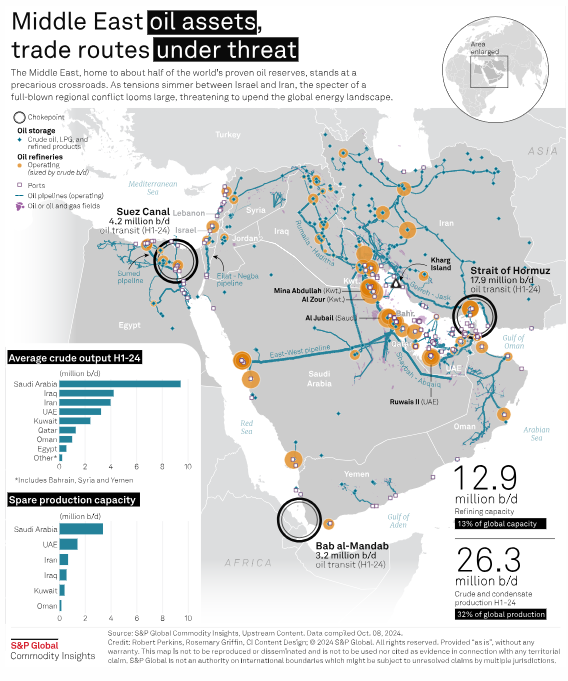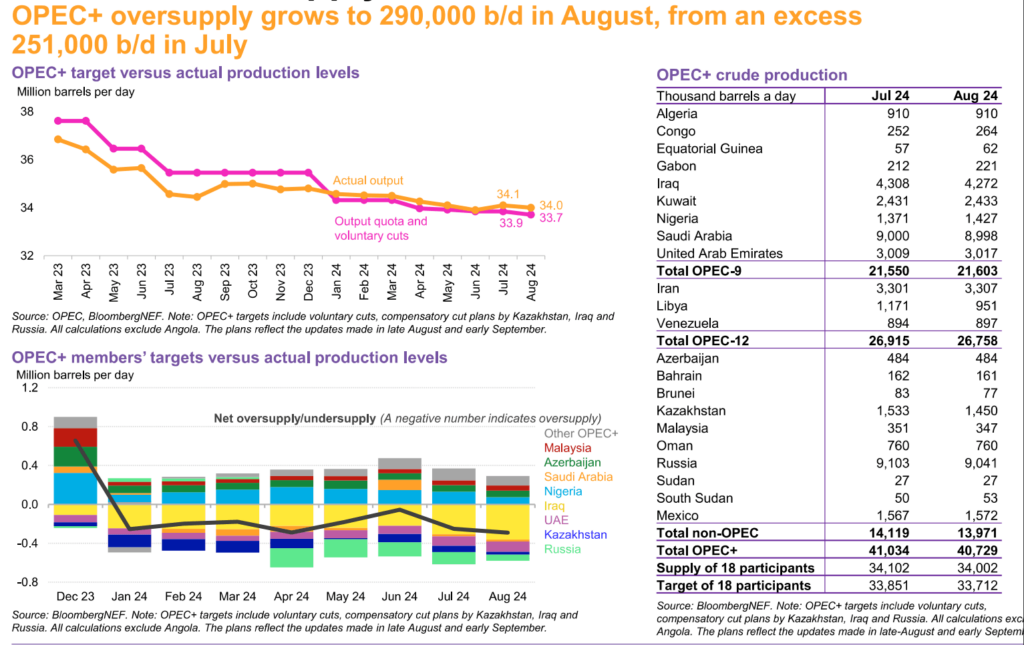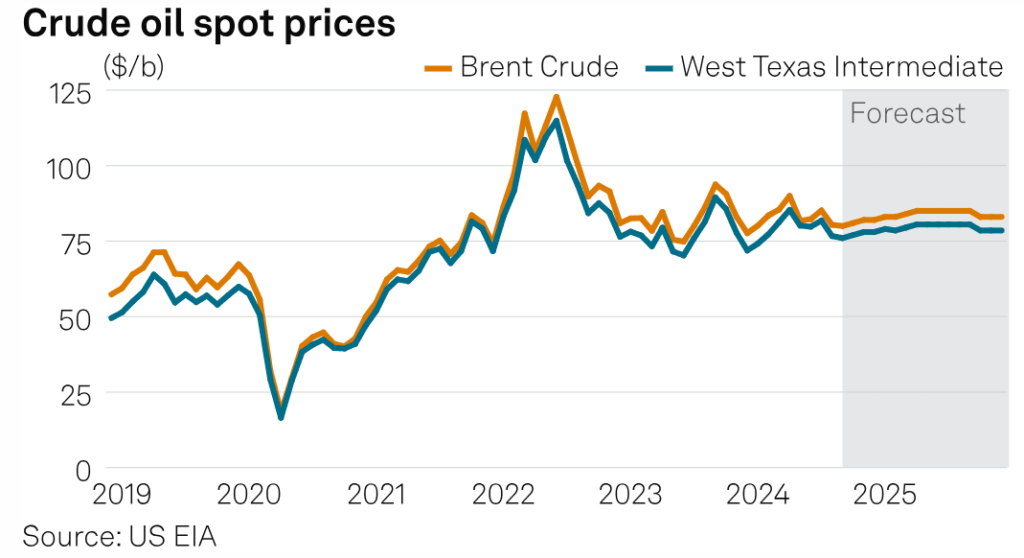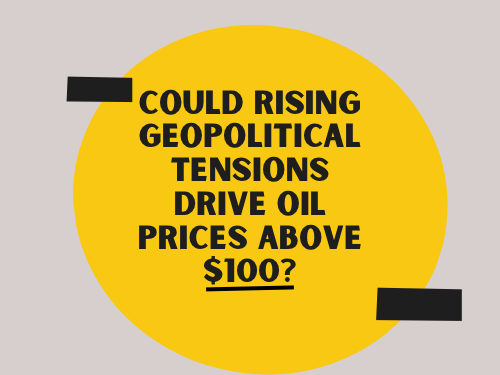Despite the ongoing conflict between Israel and Iran and the elevated geopolitical risks in the Middle East, oil prices have remained surprisingly restrained. Brent crude has been trading within the $73 to $77 range, indicating that the physical market fundamentals are not aligned with the geopolitical premium that many anticipated. There are concerns about the potential disruption in oil supply, particularly with the ongoing missile strikes and the escalation of tensions in the region. Still, the broader market is largely anchored around a $75 average, driven by stable physical crude availability. Libya is also expected to ramp-up in crude production and this combined with the relatively stable output from other OPEC+ nations, has compensated for any potential disruptions. Additionally, while Iranian exports have momentarily paused as a precautionary measure following recent missile strikes, this has not created a dramatic supply deficit due to other sources like Libya and Kazakhstan stepping in to fill the gap. Libya is bringing back production faster than expected, and even though the Kashagan oilfield is undergoing maintenance, the overall impact on supply has been manageable.
But all of this has not stopped speculation of a return to $100 oil price. So, I decided to speak to other experts and gather their opinion about it.


I spoke with Paul Hickin, Editor-in-chief of Petroleum Economist, and asked his opinion on whether oil prices will enter the triple digit category. He said that “if actual oil export infrastructure is hit or transit through key waterways disrupted then oil prices will quickly rise beyond $100/b and it could quickly spiral even higher. However, its not in anyone’s interests for that to happen, hence why risk premiums have been fairly muted. There is also a lot of spare capacity around so on one hand that is a comfort but given that much of that excess resides in the Middle East is a complication for managing risk. Ultimately any spike is likely to be short-lived as if things do escalate to a level that leads to oil supply being impact that would likely bring the US into the equation in a direct way to quickly resolve the situation.”
In this regard, Gulf states have been playing a crucial role in trying to prevent further escalation in the conflict, particularly by lobbying the U.S. to discourage Israel from striking Iran’s oil facilities. Saudi Arabia, the UAE, and Qatar have communicated that if Israeli attacks target Iran’s oil infrastructure, the ripple effects could endanger their own facilities and ignite a larger regional crisis. They have even refused to allow Israel to use their airspace for such strikes, clearly demonstrating their caution in avoiding direct involvement. A significant reason for their caution stems from the 2019 Aramco attacks, where over 5% of global oil supply was disrupted due to strikes on Saudi Arabia’s key oilfields. Any repeat of such a scenario could have far-reaching consequences for the global oil market.

Marc Ostwald, Global Strategist at ADM Investor Services International, when asked the same question, quipped “Tough question!”, it really all depends on what Israel decides to hit in Iran, which will likely happen in the next couple of days, given that even Netanyahu will have some sensitivity to the proximity of the US elections. In contrast to end of last week and start of this, a lot of shorts have been covered, so the short squeeze potential is more modest, but if there is extensive damage, both threatening output and raising the risk of a further escalation in tensions, then a move through $80 will be swift, even abrupt, and a test of $90 likely.” But he also added “that said, if what emerges is perceived to be unlikely to escalate tensions, i.e. not prompt major retaliation from Iran, then prices could quite easily drop back to the $70 area.”
This underlying weakness can also be corroborated by the recent U.S. Energy Information Administration (EIA) report that revised its forecast for oil prices in 2024 and 2025, lowering it by $2 per barrel for 2024 and by $6.50 for 2025. This is a clear signal that despite the geopolitical risks, broader concerns over slowing global demand are dominating the market outlook. The EIA’s downward revision is driven largely by weaker-than-expected economic growth in major oil-consuming economies, such as China, as well as ongoing reductions in global oil consumption. In particular, China’s crude imports have been underwhelming, and their refinery runs remain subdued despite recent stimulus measures aimed at boosting demand.

Gaurav Sharma, Energy Market Analyst, also agrees with this assessment. He says that “I remain very sceptical of $100 price projections even tough short-term upside pressure will likely be maintained until there is clarity on what Israel will do next in response to Iran. Decline in Brent futures over the past week / past five trading sessions – after the recent spike – has shown a rise above $80 per barrel will encounter stiff resistance. That’s because global demand uncertainties and oversupply permutations, especially for light sweet crude, continue to weigh on oil prices.”
Everyone that I spoke with don’t see oil prices touching $100 but all were also concerned about the possibility of Iran’s oil infrastructure being hit.
I also reached out to Fernando C. Hernandez, Principal at Hernandez Analytica, and he had the following to share against the same question: “Despite the severe headwinds in the Middle East, prices are unlikely to reach $100 USD in 2024. However, Iran could directly contribute to significant price increases due to potential knock-on effects from two ensuing factors.
Firstly, consider the United States’ elimination of Qassem Soleimaini, a key Iranian general, in January 2020. COVID-19 largely overshadowed his demise in terms of Iran’s military retaliation. However, Iran is now directly menacing the United States by threatening to eliminate Americans who were involved in Soleimani’s demise. Remember, Soleimani played a crucial role in ensuring the cohesiveness of Iran’s proxies currently engaged in conflict with Israel. Secondly, the latest missile bombardment by Iran in Israel compounds matters, making it crucial to closely monitor Israel’s potential retaliatory strike on Iranian oil infrastructure. Israel’s demonstrated willingness to attack Yemen’s oil storage and energy infrastructure is a strong case in point.”
In light of the discussions with various industry experts and the recent developments in the global oil market, it becomes clear that while geopolitical risks are high, the likelihood of oil prices soaring to $100 per barrel remains slim, barring any catastrophic escalation. Analysts are consistent in their view that current market fundamentals, including stable production levels from OPEC+ members and a less-than-expected demand from major consumers like China, keep prices anchored around $70 to $80 per barrel. Even with heightened tensions between Israel and Iran, the market appears more focused on oversupply risks and subdued global demand, particularly as highlighted by the EIA’s recent downward revisions for 2024 and 2025. However, the real risk lies in the potential for disruption to Iran’s oil infrastructure, which could drive a short-term price spike. The restrained response from key Gulf states, their efforts to prevent escalation, and the cautious approach from Israel and its allies suggest that the situation will be carefully managed to avoid further destabilization. In the near term, prices will likely fluctuate within this range, with only significant physical disruptions pushing them into higher territory.













